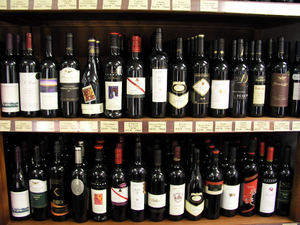Although many writers are criticized for peppering their work with short sentences on the grounds that such representations are choppy or linguistically unremarkable, such suppositions are not necessarily correct. Indeed, short sentences can make use of language in iconoclastic and/or interesting ways that-in addition to constituting a new manifestation of creativity-make words and the meanings they represent seem smooth, seamless. For this reason, I encourage writers in search of new literary techniques to use short sentences as a conduit through which to convey ideas in fresh ways.
In my own search for new ways to express old themes, I have found the short sentence efficacious in making my transmission of ideas transcend the former forms and meanings that characterized my work. Additionally, intentionally including short sentences in my work causes me to think in new ways that can result in the conceptualization of ideas I had never contemplated before. The following work is the product of my cognitive efforts:
Hent the hint. But seize it with the sort of leisure one evinces upon moving through the safe streets of a well-lit neighborhood whose inhabitants are thoroughly immersed in a world of docile domesticity where the concept of violence has never been realized. At all. By anyone.
Here, the narrative begins with a short sentence followed by an extremely long utterance that draws attention to the fact that its predecessor’s chief characteristic was brevity. After the lengthy sentence, the brief story concludes with two pithy expressions that emphasize the idea expressed in the grammatical unit that preceded them. Upon considering the sentences carefully, it would become plain that the first one functions as an edict in which the speaker urges the listener to hent-or seize-a hint. Understanding the meaning of this opening is necessary to grasping the significance of everything that follows, and the reader becomes aware of this when she or he dives into the second sentence. As the reader learns upon moving forward into the text, what the hint discussed in the first sentence actually is will not be discussed. Rather, the writer only provides her audience with a description of how the hint is to be hented. It is to be done blithely, with the same untroubled and phlegmatic demeanor one would possess upon strolling through a safe neighborhood. In concluding the work, the writer uses two more short sentences that augment the reader’s awareness of the ubiquitous presence that peace has in this violence-free neighborhood. With the words “at all” and then “by anyone,” the writer details that no one in the neighborhood is participating in the depravity indigenous to exacting violence against another individual. When one considers the work collectively then, the import of the short sentences becomes plain. They flood the main sentence with additional meaning that amplifies its signification. The first sentence underscores the reader’s awareness that the long phrase is a mode of actualizing the reality its forerunner alludes to. And the final two sentences augment the reader’s awareness that the neighborhood discussed in the main phrase is safe by revealing that no one is participating in any violent endeavors.
When one considers the distinct personality and details that short sentences can contribute to written works, the efficacy of including such grammatical units in one’s stories becomes plain. The act of doing so can engender the creation of new ideas and-although I didn’t discuss it earlier-aesthetically interesting forms. For these reasons, I encourage writers to be receptive to using short sentences as a literary technique that contributes to the creative dimension of their work.
Related Articles From Jocelyn:
Writing Tips: Using Space to Convey Meaning
Writing Tips: Using Color to Emphasize Your Primary Motif
Writing Tips: Talking About Sex with Sensitivity
Jocelyn Crawley holds B.A.’s in English and Religious Studies. Her work has appeared in Jerry Jazz Musician, Nailpolish Stories, Visceral Uterus, Dead Beats, Four and Twenty and Haggard and Halloo. Other stories are forthcoming in Faces of Feminism and Calliope.




